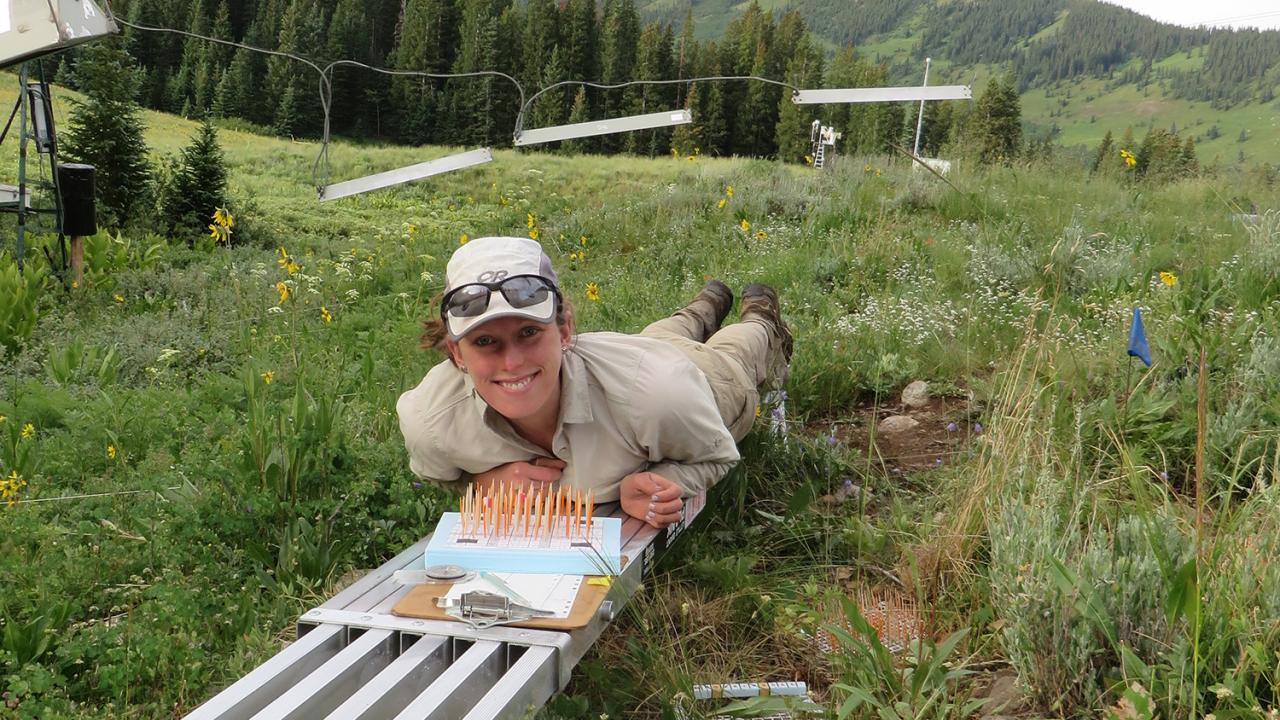
Small Flowers, Big Implications for Species Extinction in the Face of Climate Change
A small, short-lived mountain wildflower is providing clues to understand the larger threats of species extinction as the climate warms.
In a new study from Science Advances, UC Davis alumna Anne Marie Panetta, ’17 Ph.D. in Ecology, used historical surveys and experimental data to demonstrate that climate warming contributes to a reduction of biodiversity in ecosystems.
“This experiment is incredibly powerful because it gives us the ability to look at short-term and long-term responses, which are necessary to form accurate predictions about climate warming and its effects,” said Panetta, who is now an ecology and evolutionary biology postdoctoral researcher at the University of Colorado Boulder.
Warming native flowers
Panetta and her colleagues studied the effects of climate warming on Androsace septentrionalis, a widespread wildflower also known as the northern rock jasmine. At her field site in the Colorado Rocky Mountains, northern rock jasmine live for around two years on average. The researchers studied multiple generations, and the flower’s short lifespan suggests its population-level response to climate warming is likely more rapid.

“Since this species is geographically widespread, climate warming is unlikely to only affect local populations,” Panetta said. “It could affect populations across the Northern Hemisphere.”
The experiment included ten plots, five of which were warmed by infrared heaters and five that remained at ambient temperatures. The heaters affected soil temperature and moisture, producing conditions that were about 15 to 20 percent drier than the control plots and warming the plots by about 1.5 degrees Celsius annually.
Researchers found that climate warming affected northern rock jasmine at multiple stages of its lifecycle. Compared to the control plots, heated plots had roughly 90 percent fewer seedlings and 92 percent fewer established plants.
“The idea that climate warming is driving population declines and local extinctions has been supported by many observational studies,” said Panetta. “These studies strongly suggest causal relationships between warming and population responses.”
But a suite of other factors, like habitat loss and pollution, often vary with temperature, making it challenging to pin the cause of population decline solely on climate change.
“For this reason, experiments are the gold standard for identifying causation; they allow you to measure the response of a system to the change in one factor while holding other factors constant,” Panetta said.
A long-term experiment low on funds
For more than 25 years, researchers have monitored the effects of climate warming on wildflower populations in a subalpine meadow in Gothic, Colo. Dubbed the “Warming Meadow,” the experimental site is part of the Rocky Mountain Biological Laboratory and is one of the longest operating controlled experiments on climate change in the world.
As a graduate student, Panetta spent time writing grants to ensure her “Warming Meadow” research was funded. Though her study made it to press, the “Warming Meadow” experiment is running out of operational funds. Panetta said funding could run out by this summer.
“While this is spatially a localized experiment, it is quite broad temporally,” Panetta said. “Understanding ecological evolutionary responses to climate change really needs long-term experiments like this.”
Other contributors to the study include UC Davis Professor Emerita Maureen Stanton, the Department of Evolution and Ecology, the Ecology Graduate Group, the Center for Population Biology and Professor John Harte, of UC Berkley. Funding was provided by the National Science Foundation, the Winslow Foundation, the UC Davis Center for Population Biology and the Rocky Mountain Biological Laboratory.
